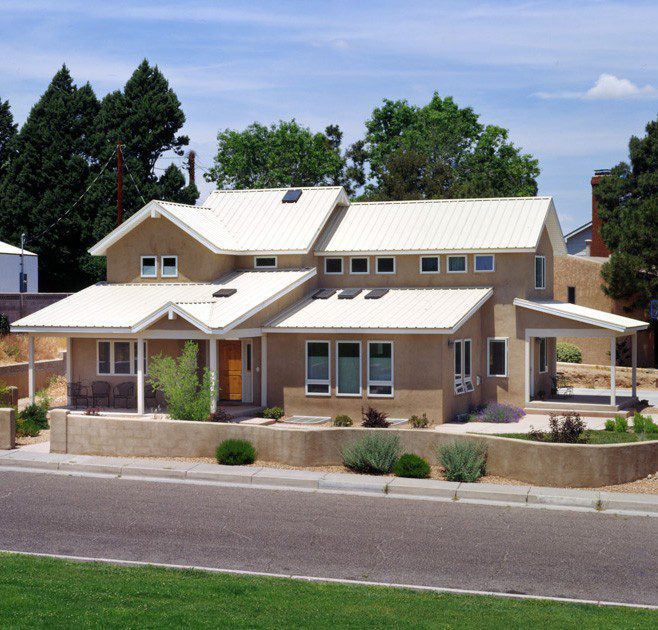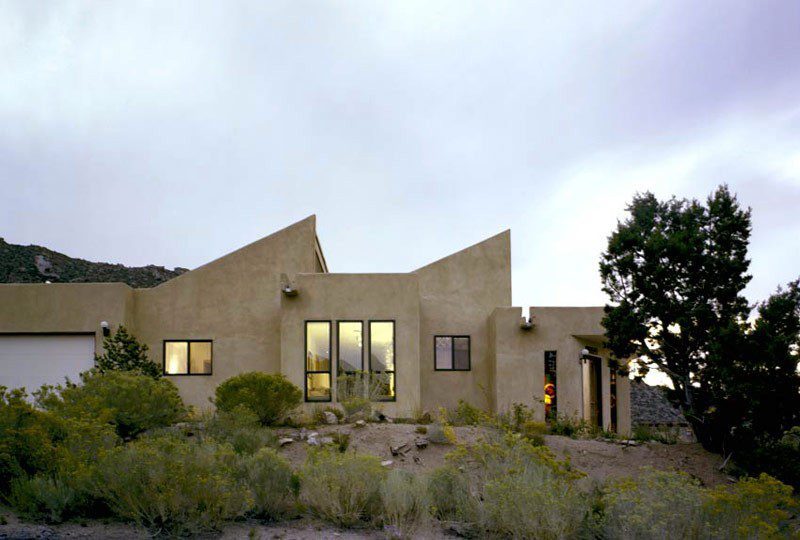
When you become a client, we work very closely with you over several months to design a home that you love. It is a joint effort with each of us bringing crucial elements to the table. To succeed at the highest levels we need to work together! Here are some guiding principles we have found helpful in past projects.
Keep an Open Mind
We will want to learn about your personal lifestyle in order to design the best possible home for you. Design meetings and discussions often become a place to explore ideas. It is best not to get locked in to any one idea too quickly. The longer everyone can keep an open mind to consider alternative approaches, the more productive the exchange of ideas. Being willing to seriously consider an idea that at first sounds impossible or ridiculous is key. Welcome the exchange of ideas and encourage different avenues of thought. Let one idea generate another and encourage those around you to brainstorm with you. The creative process is always better with a free exchange of thought between several independent minds. We welcome, encourage, and desire your input! Remember that the final decision is always yours. It is your home, after all.
Communicating Your Design Ideas
Communication in design is critical, and some communication strategies are more successful than others. Here is a strategy that we have found works very well. This communication strategy is not unique to the residential design industry and is a good way to engage with anyone you hire to produce creative work.
In the design process you will surely see some aspect of the design you want to tweak or explore further. For example, say we are working on the master bedroom suite and you are wanting to explore other options for arranging the master bath and closet in relation to the bedroom. It is understandable that you might to want to start drawing floor plans until you come up with one you like, that you then send to us to copy. While this is very tempting, it is not the best way for you to get the most out of our experience and skill. When giving us your design ideas, it is best to describe what you are wanting to accomplish without actually drawing a plan. Based on your input we will work on devising one or even multiple solutions that address the issues and ideas you brought up in your description.
Often times, when we are presented with a plan drawn by a client, there are important considerations that may not have been taken into account such as structural repercussions or how the change affects other aspects of the design that might not be immediately obvious. This potentially forces us to spend time explaining all the ways that the suggested design does not work rather than spending that time doing what we do best, exploring and presenting solutions that take into consideration all necessary aspects of a building’s design. You hired us to help you design your home and in order to get the most bang for your buck, you be the director, but make us work to come up with the specific solutions!
Learn, Learn, Learn!
Learn as much as you can about the upcoming choices you will be making and you will contribute most effectively to the success of your project. Read books, magazines, and search the Internet for more sources of information. If you have not yet read Patterns of Home, it would be a good idea to do so before we start design.
How You Can Help Us Design For Budget
Designing for budget falls somewhere between an art and a science.
The first step in effectively designing for budget is knowing what the true budget is! We have had clients who have been afraid to tell us their real budget because they thought they would not get as good of a deal. This is simply not the case. (Read The Mystery Budget in the Pricing section for a real life example.)
good of a deal. This is simply not the case. (Read The Mystery Budget in the Pricing section for a real life example.)
We have no control over the market prices for materials and labor. All we can do is factor in the most realistic numbers available (and these numbers are always in flux). Giving us a lower budget number at the beginning will only result in frustration during design because while we are aiming at one target, you will be aiming at another.
When you consider the differences between labor costs in different areas, between builders, and at different times of year along with fluctuating materials costs, you can see that designing for budget is really a best guess judgment based on experience as much as anything. Until you have plans and your builder puts them out for bid to get real numbers, the estimated costs can be only that...estimates. We do have general guidelines and experience for precedent, but designing for budget will never be exact. That is why we always recommend having a cushion just in case.The Might-As-Wells
It is easy to want more than your budget will allow. You might get into a project of this scale and find yourself saying, "if we do this, we might as well do THIS..." If budget is an important issue to you, avoid the “might-as-wells” and keep it simple.
You have hired us to design your home with you and to keep it in budget. If you follow our lead, we will be able to do our job more easily. Restraint is sometimes difficult, but we ask you to work with us on this. If you are clear with us about your budget and follow our advice during design and keep changes during construction at a minimum, your home will likely be close to your target budget.
What to Expect + How to Prepare
Designing your new home is a joint effort between you and us. Our goal is to design your home with as many of your ideas, priorities, needs, and wants as your budget will allow. Then we create plans that provide the details and specs for your builder so your home can be built with maximum predictability and efficiency.
Your role is equally important. Not only will we be relying on you to give us feedback so your home fits your needs, but you will also be making decisions on the details and finishes for your home. What type of flooring do you want? Light fixtures? Plumbing fixtures? Exterior and interior wall finishes? Colors? Appliances? If you do not know quite yet, start studying the magazines and visiting the showrooms so you can begin to identify what you like and do not like. The more of this that you can do now, the easier it will be later.
All of the finish materials are provided by your builder. If you negotiate a cost-plus-a-fixed-fee arrangement with your builder he or she will not need to know your choices before your project begins since they will not be giving you a bid. In this case, builders will typically provide a cost allowance in their initial construction cost estimation. This allowance will guide you as you shop for the actual finishes or appliances so that you can keep the project in budget. Your builder will let you know when they will need your materials choices. If you can stay ahead of him/her with your selections he or she will work more efficiently and your project will not be stalled while that Italian tile makes its way on the slow boat from Florence.
Kitchen, Lighting + Closet Designers
You may consider hiring local lighting, kitchen, and closet designers to help you with your design details. In exchange for buying their products, they often will work with you on the details of your lighting plan, kitchen, and closet designs. This can be helpful if you do not have firm ideas and would like some expert advice in these areas.
Our design will include the placement of your kitchen appliances and countertops, but a kitchen designer will provide a range of design services beyond this which can be helpful, especially for the serious cook.
Our electrical plans will rough out the placement of switches, outlets, and light fixtures but a lighting specialist may have other ideas which will make the lighting in your home more elaborate. With the multitude of choices available to you in lighting these days, a professional will offer suggestions that might be just right for you. It should not cost you more to go this route since they are paid with the lighting products you purchase from them.
The same is true for closet design. It is a good idea to make the best use of space in your closets and the specialty closet systems available today will work to your advantage. In all of these cases, let them know your budget so they can offer suggestions in your price range.
These are but a few of the many decisions you will be making during the design and construction process of your new home. We will be asking a lot of questions and giving you guidance and your builder will do the same. We also suggest that you engage yourself as much as possible in the project. With so many things to be considered and decided upon, and with new products hitting the market every day, do not rely on any one person to guide you every single step of the way. Ask questions and do your own research and analysis. You will probably teach the rest of us something.
Furniture Arrangement
Play With Your Furniture
Measure the furniture you are planning to use in your new home then use furniture templates of the same size or create your own to approximate your own furniture. Arrange your furniture in the various rooms of your plan. Try arranging the furniture in several ways. Allow ample walking space around the furniture.
As you move the furniture around, think of these questions:
- Does the furniture placement take best advantage of the views or art or the TV (your preference)?
- Is your fireplace in the right place?
- Where would built-in shelves be most convenient?
- Do other design features come to mind with your furniture in place?
- Spend some time looking at the rooms with the furniture in place and imagine actually living in the room and doing the things you do there.
- Is there ample room for your activities?
- Do any changes need to be made to the shape or design of the room to accommodate the furniture or activities that take place there?
- Where should the windows be placed?
Discuss and brainstorm the furniture arrangement with your partner or friends. Make a copy of the plan with the furniture and send it to us. Write notes where necessary. During our next design conversation we can discuss your plan and design options considering your furniture layout. Taking the time to go through this exercise will tell you a lot about your evolving plan and will identify any problem areas that need attention. Much easier now than later!
